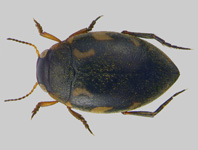Abstract
A new deep-sea stalked barnacle, Vulcanolepas scotiaensis sp. nov. is described from hydrothermal vents at depths of 2400–2600 metres along segments of the East Scotia Ridge and from 1400 metres in the Kemp Caldera. Both locations are areas of volcanic activity that lie on the Antarctic-South American Ocean Ridge complex near the South Sandwich Islands. This discovery confirms a wide distribution in southern seas for Vulcanolepas, complementing the previous records from deep-sea vents in the Lau Basin and Kermadec Ridge in the southwest Pacific, and the Pacific Antarctic Ridge in the southeast Pacific. V. scotiaensis sp. nov., the third described species of Vulcanolepas shows an extraordinary range in morphology, requiring a reassessment of the original diagnosis for Vulcanolepas. Although the morphological envelope of V. scotiaensis sp. nov. includes representatives with a peduncle to capitulum ratio similar to that observed in most neolepadines, the peduncle generally shows greater proportional length than in species in any neolepadine genus except Leucolepas; it is distinguished from other species of Vulcanolepas by a broader capitulum, much smaller imbricating scales on the peduncle and more ornamented capitulum plates. The morphological diversity of V. scotiaensis sp. nov. is interpreted as having arisen due to abrupt changes in water temperature.
LSID: urn:lsid:zoobank.org:act:AA2AFDA5-0B08-466A-A584-D3FDBDE9DA61

